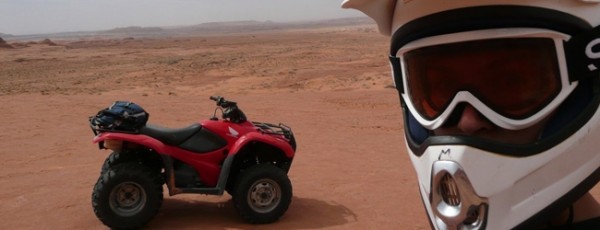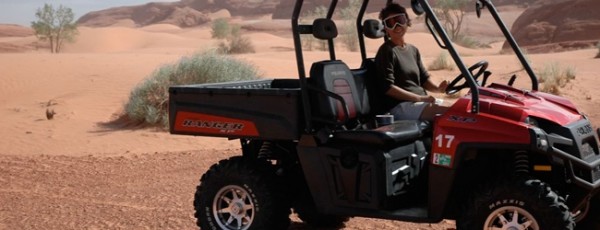John Carter creates Mars on location in remote Utah
Utah in the western US was used extensively for the filming of Andrew Stanton’s epic sci-fi John Carter. Rebecca Puck Stair was one of the Location Managers on the project tasked with finding eye-catching filming spots in the sparsely-inhabited state.
 The brief Puck was given by the production team was tantalising and involved exploring Utah in depth. She was asked to get a full sense of what was on offer without having to initially worry about some of the usual filming practicalities like crew and equipment access.
The brief Puck was given by the production team was tantalising and involved exploring Utah in depth. She was asked to get a full sense of what was on offer without having to initially worry about some of the usual filming practicalities like crew and equipment access.
Puck comments: “It was a scout's dream. No specific scripted locations to find, other than ‘interesting, exotic, remote places’ that Stanton would later place into the script as he deemed. I would travel to dramatic locations, hike a bit and take photographs, then drive to the next breathtaking spot.”
Access to the locations clearly had to be sorted out once filming actually began. The nearest accommodation was often several hours away and even water supplies were sometimes a two-hour round trip. Mass specialised vehicle rentals were necessary to get everyone to where they needed to be.
It was a scout's dream. No specific scripted locations to find, other than ‘interesting, exotic, remote places’ that Stanton would later place into the script as he deemed.
Rebecca Puck Stair
Puck recalls: “To get crews to our isolated sets, the locations department once rented all the boats in town and on another occasion in a different town rented every single ATV available, forming a little flotilla. It was a joy to watch ski-goggle-wearing executives travelling around on sand dunes - a far cry from their desk jobs!”
Up to nine months were needed to prepare some of the filming permits and the production negotiated with everyone from the Southern Utah Wilderness Alliance and US National Parks through to the Navajo Nation, the Utah Film Commission and additional private landowners. Owing to the remoteness and arid climates of many of the locations that were eventually picked, protecting the fragile environments was crucial.
Puck says: “I spent two days modifying snowshoes so a botanist and I could walk over volcanic crust without breaking through, to survey for an endangered cactus that lives nowhere else on earth but near the ‘Zodangan plain’, where John Carter kills an entire army.”
Teams of experts ranging from biologists and botanists through to geologists and archaeologists were all consulted in depth to figure out how to film the locations without leaving permanent marks. Only one actual set was built as the aim was always to capture the region’s natural beauty.
Puck concludes: “It took time, but we developed thoughtful plans that left our pristine locations in wonderful condition.”
(Main page image copyright: Frank Connor – © 2011 Disney.)
Related Posts
- Blood & Oil becomes first TV drama in ten years to film in Utah
- HBO TV adaptation of 70s sci-fi movie Westworld to film partly in Utah
- Spinal Tap director Rob Reiner uses Utah filming incentives for new movie
- Utah aims to lift domestic and international profile with new filming incentive
- Location manager Laura Sode-Matteson talks to The Location Guide
- Park City Film Studios breaks ground in Utah
- Will Smith films sci-fi epic After Earth on location in US and Central America
- Kevin Costner’s Yellowstone and four other productions to shoot in Utah
Related posts:
Global Filming Incentive - United States of America (see more…)
- Kansas City Rebate Incentive
- Virginia Motion Picture Tax Credit
- Wyoming: Film Industry Financial Incentive (FIFI) Program
- West Virginia Film Industry Investment Act
- Washington DC: Rebates
- The Washington Motion Picture Competitiveness Programme
- Virginia: The Governor’s Motion Picture Opportunity Fund
- Vermont: no formal incentive in place.
Comments
Not Logged in
You must be logged in to post a comment

There are no comments